The Types and What Are the Uses of Silk Fabrics?
When you think of silk, chances are the first thing that comes to mind is a luxurious scarf or piece of clothing. And while it's true that silk has been used for centuries to make beautiful garments, it actually has a lot of other uses as well. In this blog post, we'll take a look at some of the most popular types of silk fabrics and how they're used.
Jump To Section
The Types of Silk Fabrics and What Are the Uses?
● Silk Stretch Double Crepe de Chine
What Are the Pros and Cons of Silk Fabric?
What Are the Different Types of Silk Fabric and Their Uses?
Silk Satin features: tight weave, delicate and soft hand, front and back, smooth and delicate front, opaque appearance, good luster and color. The reverse side is non-glossy and plain, with a distinctly cleaned texture. It is the most conventional of silk fabrics. Common thicknesses: 12mm is thin and translucent and is generally used for accessories such as scarves and eye masks. 16 and 19mm are relatively cost-effective, thin, but opaque, generally used as silk scarves, dresses and pajamas, 30 and 40mm are heavyweight silk, both from the thickness and texture of the fabric have obvious advantages over the former, generally positioned high-end dresses or silk bedding.
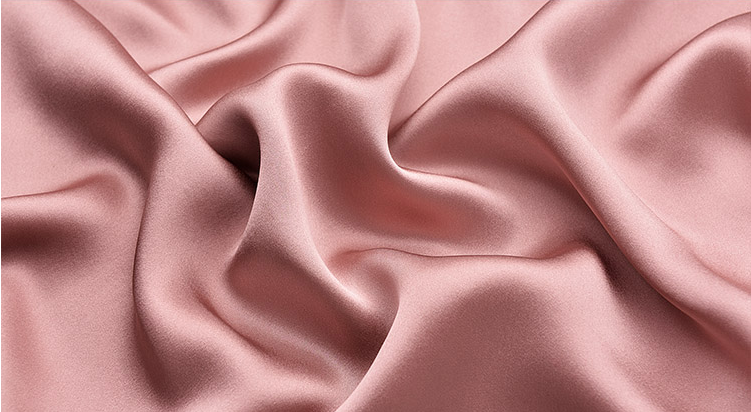
Silk crepe de chine has subtle ruffles on both sides of the fabric. Features: The surface of the fabric is crepe with slightly uneven and wavy scaly crepe patterns. The fabric is comfortable and breathable, light in texture, soft to the touch and has a good drape. Silk crepe de chine has no positive or negative distinction. It has a darker luster and is a matte fabric. The surface of the fabric has a faint pearl luster, showing a subtle beauty, low-key and restrained. Common thickness: 12 mm and 14 mm are relatively thin, and translucent. If the clothing pursues a sense of lightness or sexiness, these two thicknesses can be selected. 16 and 18 mm are relatively thicker and can be made into shirts or dresses. 30 and 40 mm belong to heavy silk crepe which is generally suitable for silk clothing in autumn and winter. Silk crepe de chine has a large about 10% shrinkage among silk fabrics. Therefore, if you use crepe de chine for clothing, it is generally recommended to shrink the fabric first to ensure that the fabric will not shrink again after being ready-made.
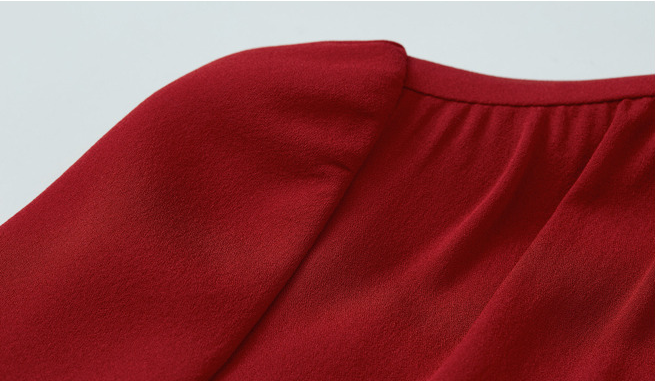
Silk georgette is very light and comfortable. As it is relatively thin, if it is used for clothing, it is recommended to use a double layer, and if necessary, add a layer of lining. The surface of the georgette fabric is matte, and the surface is densely covered with fine and uniform wrinkles and obvious sand holes. It is similar to chiffon, except that the gloss and feel are not as smooth as chiffon. Common thickness: mainly 8 mm, 10 mm, which are relatively thin and are often used as silk scarves. 12 and 14 mm are relatively impermeable, can be used as shirts, suspenders, linings, skirts, thicker one is 23 mm heavy georgette, this fabric is impervious, and it drapes very well, can be used as skirts, pants, curtains.
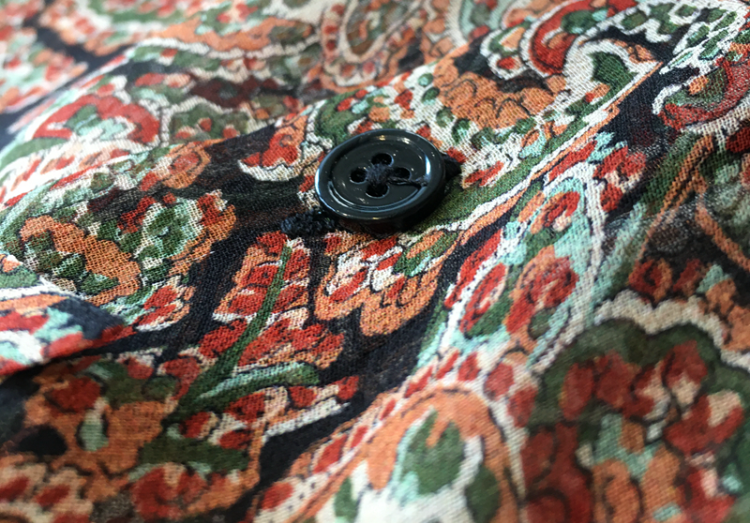
Silk habotai has better shading and can be used to make high-grade silk clothing linings (anti-glare). The texture of silk habotai is compact and clean, front and back side is same, and the luster is soft, that is, it is not as bright as satin, nor is it like the pearly light of crepe de chine and the matte of georgette. The hand feeling of habotai is relatively soft and firm, but not as smooth and delicate as satin. In short, it is more "moderate". The biggest feature of habotai is that it has strong shading, so it is widely used in the lining of clothing. Common thickness: 8, 10, 12 and 15 mm. The shrinkage rate of habotai is relatively small in silk fabrics, similar to satin, usually about 3% to 5%, generally, no shrinkage treatment is required. Silk habotai is more suitable for scarves, skirts, clothes or lining of bedding, and even work clothes.
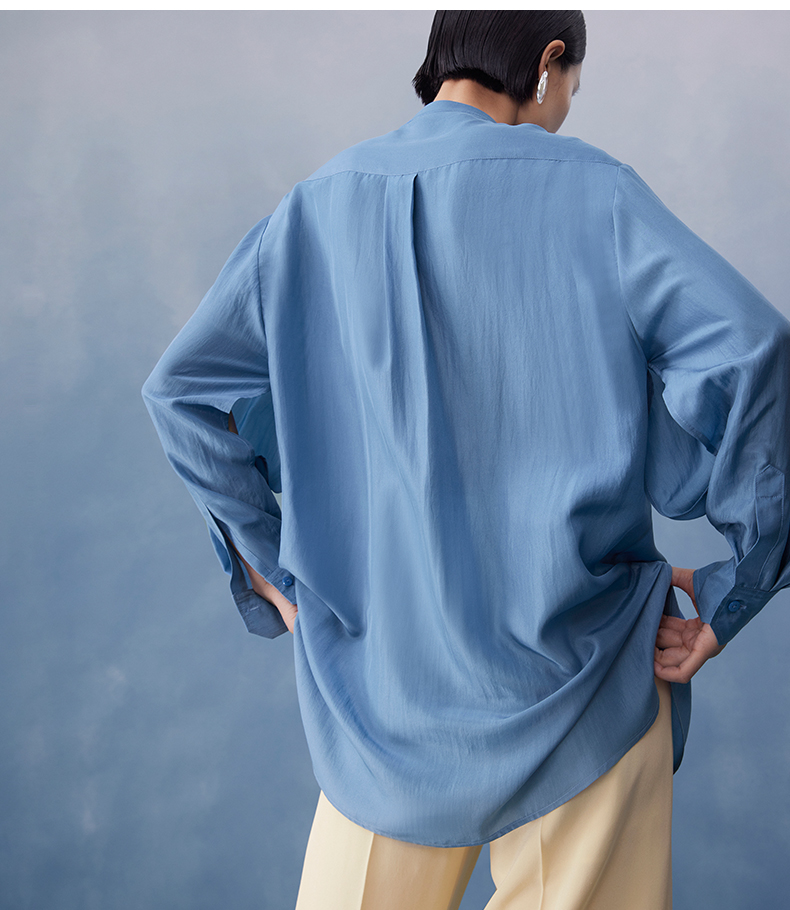
Silk organza is a kind of transparent and translucent light yarn, the fabric density is small, the warp and weft is relatively sparse, and it is directly woven from raw silk. Features: This silk fabric is so soft unlike other fabrics. It has some hardness and is more suitable for fashionable silk clothes, which can make the shape fluffier. Unlike georgette, satin and crepe de chine are woven from cooked silk, which is very soft, organza is the main fabric of wedding dresses because it is woven from raw silk, and the fabric is relatively hard. Therefore, clothes made of organza are easy to plasticize and have a crisp feeling. Common thickness: mainly 5.5mm, 8mm, 12mm, 14mm and 16mm, and the width is mainly 108cm and 140cm. The thicker, the harder, with transparency decreases.
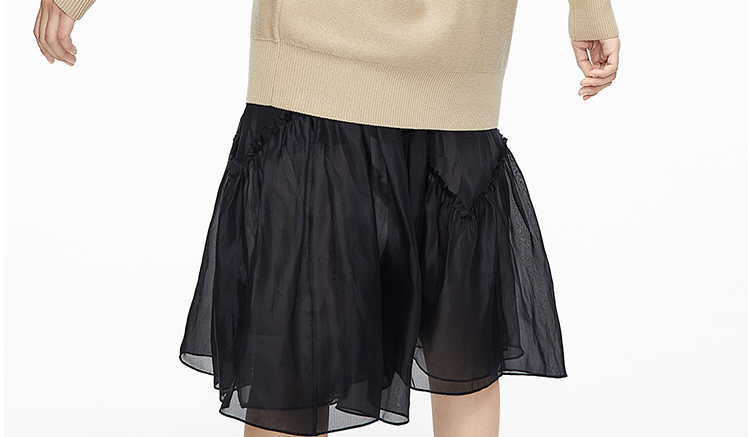
Silk Stretch Satin is a stretch silk fabric, its composition is 94% mulberry silk + 6% spandex. The general silk fabric is said to be woven from 100% mulberry silk. But silk stretch satin is composed of 6% spandex and 94% mulberry silk. Why add 6% spandex in it? Not because of cutting corners, nor to reduce cost, but to make silk fabric elastic and more comfortable to wear as close-fitting clothing. Features: Its overall effect is very similar to silk satin, with obvious front and back , the front side is full of luster, smooth and delicate, the back side is matt and elegant, and the texture is clear. The difference is that the weft (horizontal) direction of the fabric is elastic, no elasticity in the warp (vertical) direction. Common thickness: The common thickness of silk stretch satin is 16 mm, 19 mm and 22 mm, the width is mainly 108 cm and 140 cm, often used for dresses, pajamas, gowns.
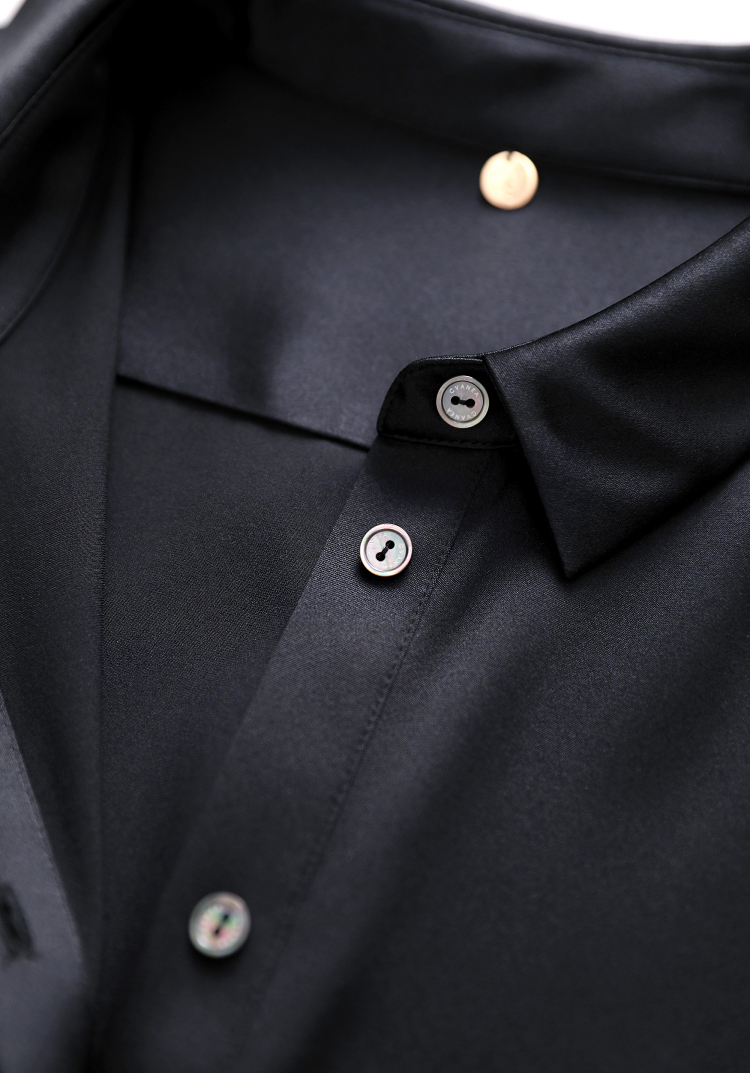
The characteristics of silk chiffon are very similar to ordinary polyester chiffon, but cooler and more breathable, hygroscopic and better for human skin. The specifications of silk chiffon are mainly 5.5, 8, 10 and 12mm. Generally, 5.5 and 8 mm are more common and mainly used as wedding scarves or scarves for painting or dyeing, while 10 mm and 12 mm are relatively rare. Generally, it is directly replaced by georgette.
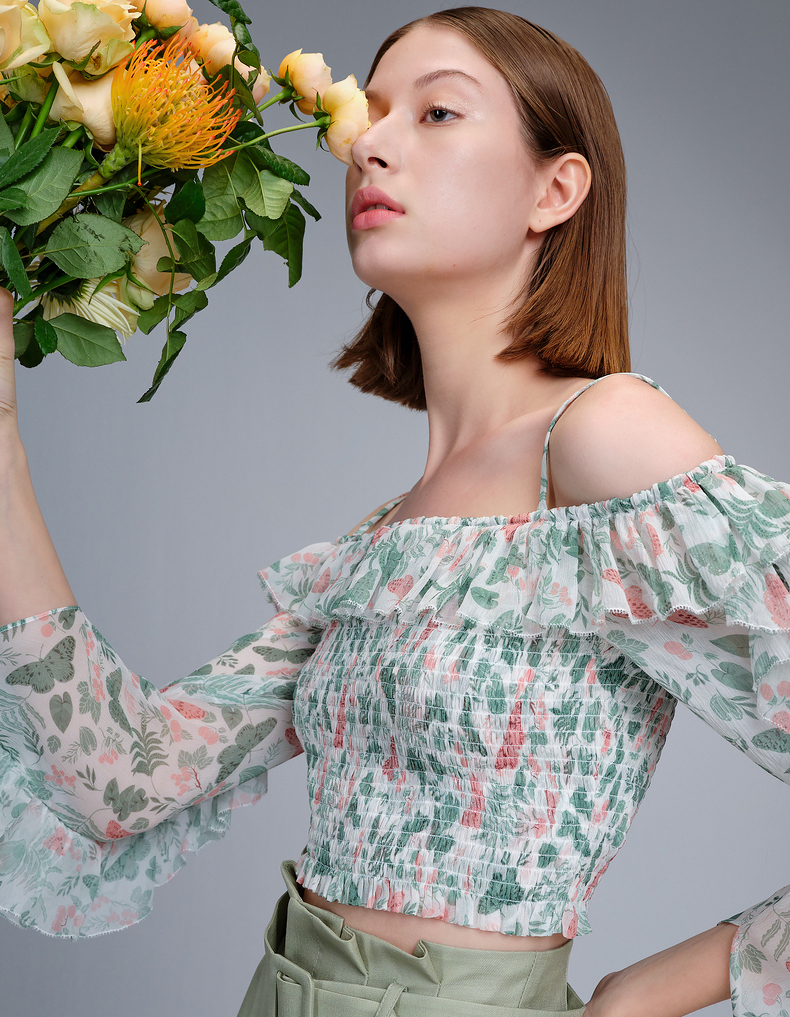
Silk double georgette fabric is a newly trendy fabric, between satin and crepe de chine, the color is not too bright, and the texture is not too crepe. Same as silk crepe de chine, regardless of the front and back, the two sides have little difference in luster and color, but silk double georgette has a stronger and more obvious luster than silk crepe de chine. Its weft yarn is twisted during weaving, which makes it has a slight elasticity in the direction of weft direction. Common thicknesses are 12 mm, 16 mm, 19 mm, 30 mm are mainly used for men's and women's shirts, dresses and other clothing.
9. Silk Stretch Double Crepe de Chine
The surface of the fabric is crepe, with slightly uneven and wavy scaly crepe pattern, there is no front and back, the luster is dark, it is a matte fabric, and the surface of the fabric has a light pearl luster. Silk double stretch crepe de chine looks basically the same as silk crepe de chine. The difference is that the stretch crepe de chine composition is not 100% mulberry silk, but about 5% spandex is added to make the fabric elastic. It is currently available in relatively few specifications, mainly in two thicknesses of 16 mm and 18 mm. Mainly used for women's shirts, skirts or dresses.
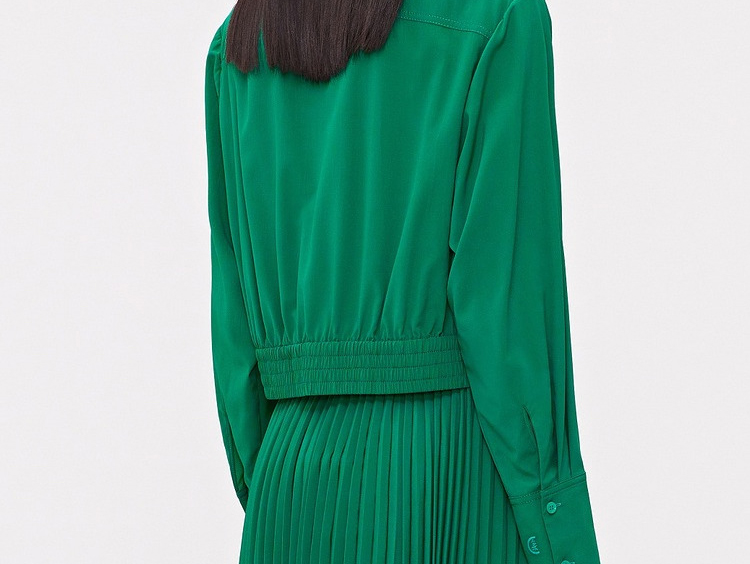
Silk cotton is a regularly 30% silk plus 70% cotton blended fabric. Since cotton is added, it does not feel as soft and smooth as silk, but because 70% cotton is added inside, it has better sweat absorption than pure silk, and its color fastness is better than silk, and the tensile strength is good. At present, the main specifications of silk-cotton are 9, 12 and 16 mm. The price is also much cheaper than pure silk. If you think pure silk is too expensive, then silk-cotton is definitely an alternative. Mostly used for clothing lining, scarves, pillowcases.
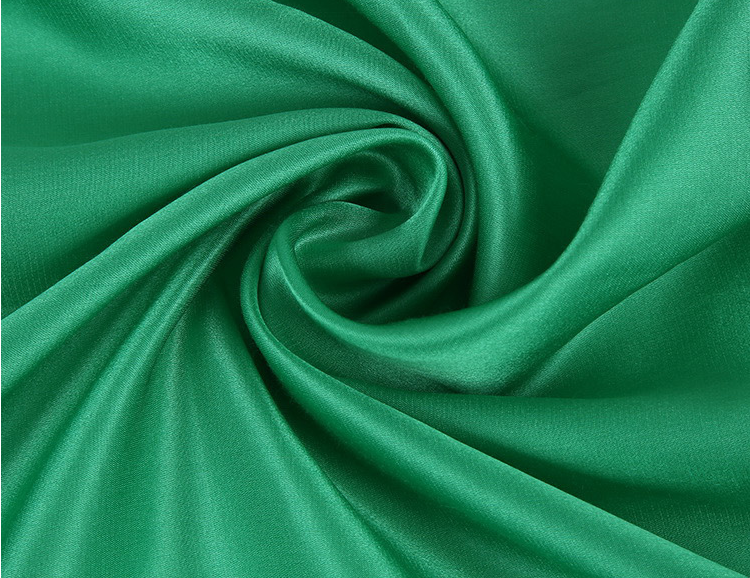
Silk twill fabric is made of twill weave. The cloth surface has obvious diagonal lines, good hand feel, luster and elasticity, silk twill is a relatively light and thin silk fabric. Its softness can be hard or soft depending on the usage, but it is not so smooth than plain crepe satin. Therefore, silk twill is generally not used for bedding, but mostly used for clothing and scarves, it is favored by brands like Hemres, Gucci... The common thickness is 10, 12, 14, 16 and 19 mm.
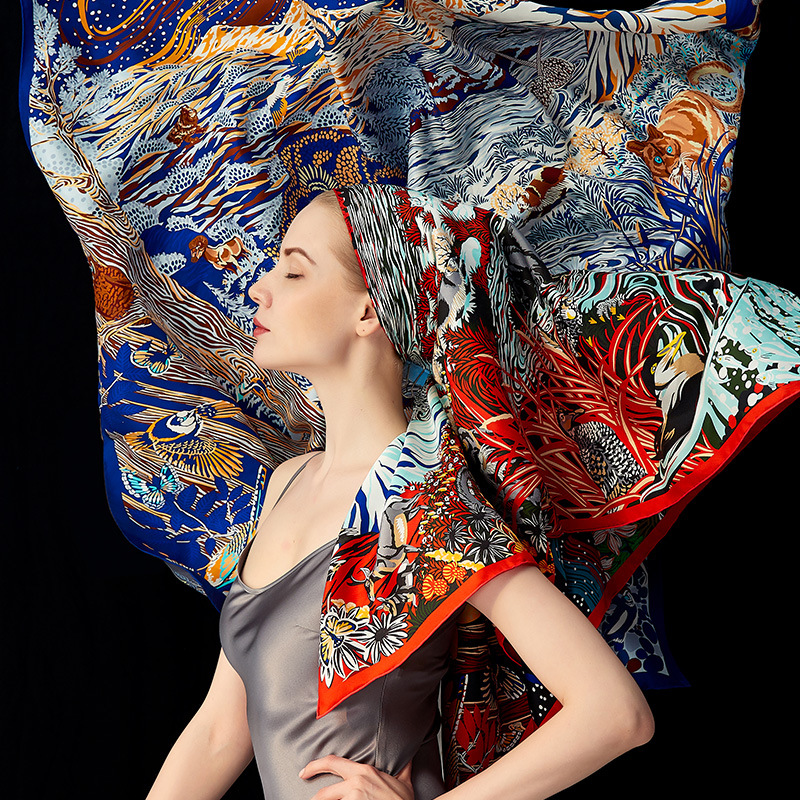
Silk doupioni has soft hand feeling, firm texture, and good drape. The silk is made from a cocoon with 2 or even more silkworms, and the silk is made from a cocoon with irregular dots and knots. There are many "bamboo knots" on the surface, the color is more elegant, and the luster is not as good as satin, and it has a three-dimensional effect. Silk doupioni are mainly 16 mm and 19 mm which can be used for curtains, bedding and throw pillows.
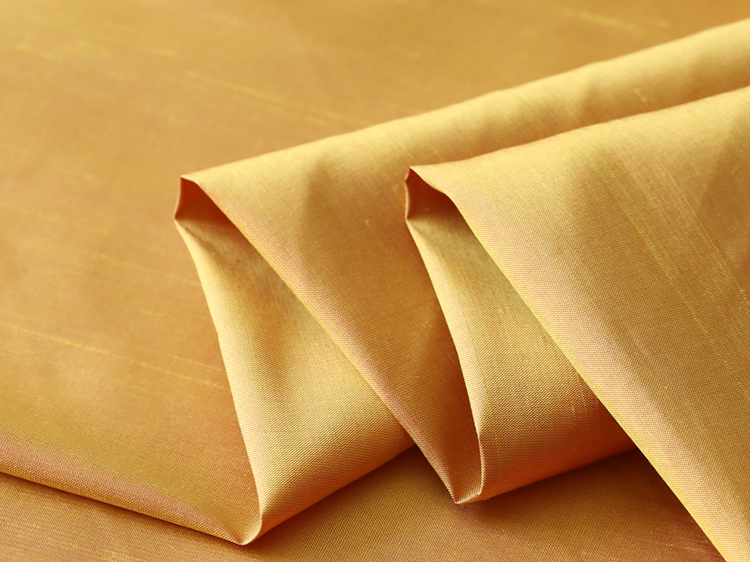
Silk taffeta fabric is woven from cooked silk. Good gloss, delicate and crisp, feel like umbrella cloth, easy to wrinkle and to form permanent creases, so it is not suitable for folding and heavy pressing, it is often packaged in rolls, not easy to care for. Because the crisp characteristics are very suitable for styling, more and more designer brands have begun to use taffeta for their clothing, festive dress or gown, or even down jacket.
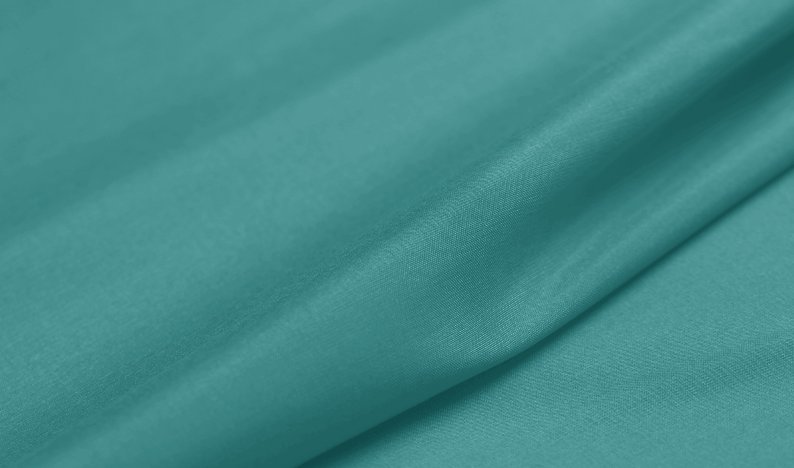
The Pros and Cons of Silk Fabric
1. Comfortable to wear.
Silk is made up of protein fibers, which are biocompatible with the human body, and with its smooth surface, its coefficient of frictional irritation to the human body is the lowest among all kinds of fibers, only 7.4%.
2. Good moisture absorption and emissivity.
Silk protein fiber is enriched with many amine (-CONH), amino (-NH2) and other hydrophilic groups, and because of its porosity, it is easy for water molecules to diffuse and can absorb or disperse moisture in the air, thus maintaining a certain level of humidity. In the dry season of autumn and winter, it helps the skin to retain a certain amount of moisture and does not make the skin too dry, and in summer, it can quickly dissipate the sweat and heat discharged by the body, making people feel cool. Silk not only has good moisture and heat dissipation properties, but also good warmth. Its thermal insulation is due to the porous fiber structure. Silk fibers contain many extremely fine fibers, which are in turn made up of even finer fibers. As a result, more than 38% of what appears to be solid silk is actually hollow. In these voids there is a large amount of air, which prevents heat from escaping and gives silk its excellent thermal insulation.
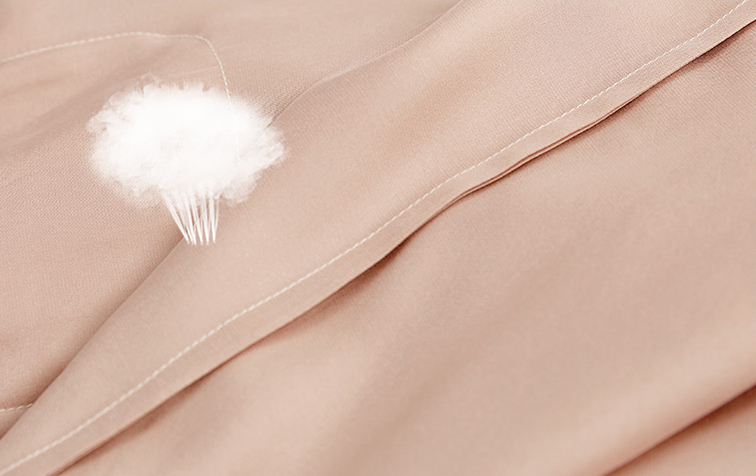
3. Sound absorption, dust absorption and flame retardancy.
Silk fabrics have a high void ratio and therefore have good sound absorption and air absorption, so in addition to making clothing, they can also be used for interior decoration. As silk has hygroscopic and hygroscopic properties as well as moisturizing, air-absorbing and porous properties, it can also regulate indoor temperature and humidity and absorb some harmful gases, dust and microorganisms. In addition, the thermal variability of silk fibers is small and relatively heat resistant, only about 5-8% embrittlement when heated to 100°C, while the thermal variability of most synthetic fibers is 4-5 times greater than that of silk. The combustion temperature of silk is 300-400°C, which is a non-combustible fiber, while the combustion temperature of synthetic fibers is 200-260°C, i.e. flammable and fusible. Therefore, the use of silk fibers as a raw material for interior decoration, not only can play a sound-absorbing, dust-absorbing, heat preservation role, but also play a flame-retardant function.
4. Anti-UV.
Tryptophan and tyrosine in silk protein can absorb ultraviolet light, so silk has a better anti-UV function. Of course, silk in the absorption of ultraviolet light, their own chemical changes will occur, so that silk fabrics in the sunlight, easy to yellow.
5. Health care.
The health function of silk is irreplaceable, which contains 18 kinds of amino acids necessary for the human body, and the human skin contains a few amino acids, so also has the human "second skin" reputation. Wearing silk clothes not only prevents ultraviolet radiation, defends against harmful gases, resists harmful bacteria, but also enhances the vitality of skin cells on the body surface, promotes the metabolism of skin cells, and has a good auxiliary therapeutic effect on certain skin diseases.
However, silk has some drawbacks as well:
1. Hard to Care for and Easily Wrinkled
The lighter yarns, raw materials and taffeta in the care of silk cannot be washed but only dry cleaned. This is why silk fabrics are more difficult to wash and care for, and silk is easily wrinkled, needs frequent ironing.
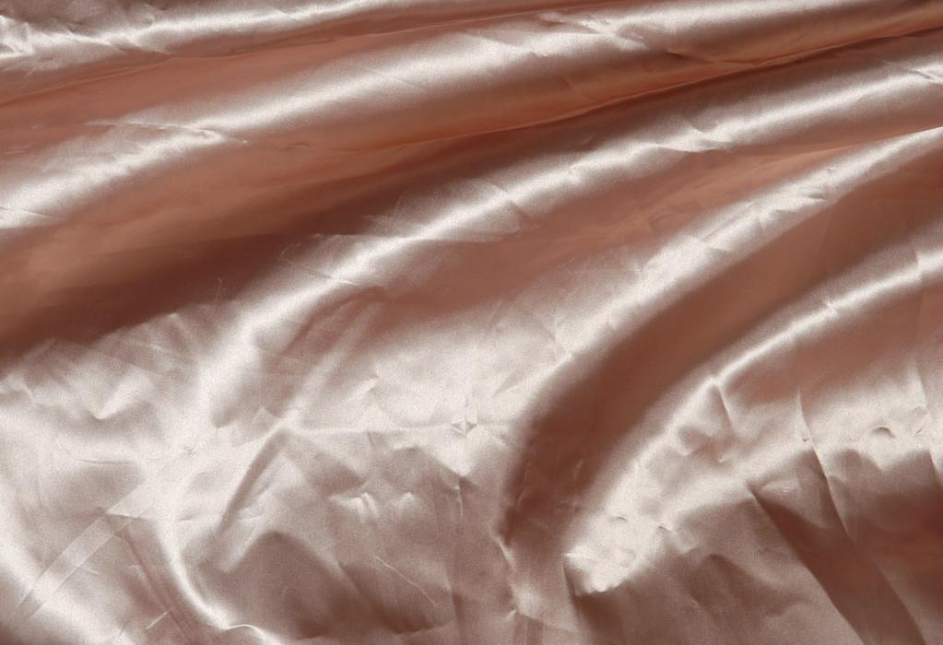
How Should You Care for Silk Fabric?
Now that you know all about the different types of silk fabric, it’s time to learn how to care for it properly. Here are some tips on how to keep your silk fabrics looking their best:
1. Always Test Your Silk Fabric First
Before washing your silk fabric, it is always best to test a small hidden area first. This will help you determine if the fabric is colorfast and will also allow you to see how the fabric reacts to your chosen method of cleaning.
2. Avoid Harsh Chemicals
When washing silk fabric, avoid using any caustic cleansers or chemicals. Instead, opt for a gentle detergent made especially for sensitive fabrics. Additionally, you should avoid using bleach since it might harm the fabric.
3. Use Cold Water
When washing silk fabric, use cold water instead of hot water. This will help to keep the fabric from shrinking.
4. Hang Your Silk Fabric to Dry
After washing your silk fabric, hang it up to dry. Just be aware that the heat of a clothes dryer can damage silk fabric, so it is best to avoid using one altogether.
5. Store Your Silk Fabric Properly
When storing silk fabric, make sure to keep it in a cool, dry place. Avoid keeping it in a damp area, such as a basement, since this can cause the fabric to mildew. Additionally, avoid storing silk fabric in direct sunlight since this can cause the colors to fade.
Conclusion
Now that you know all about the different types of silk fabric and how to care for them, you’ll be able to choose the perfect fabric for your next project. Whether you’re looking for a beautiful and luxurious fabric for a special occasion or a durable and sturdy fabric for a more practical purpose, silk is sure to have the perfect option for you. Come to Sino Silk to explore our wide selection of silk fabrics today!





 English
English German
German French
French Russian
Russian Spanish
Spanish Japanese
Japanese Korean
Korean Portuguese
Portuguese Ukrainian
Ukrainian Arabic
Arabic Italian
Italian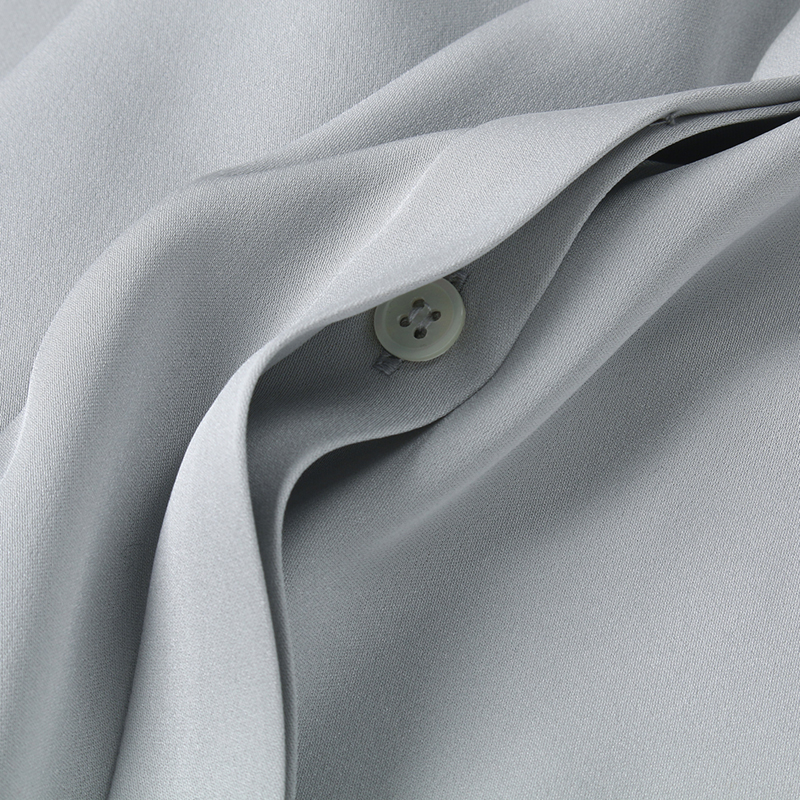












Comments
Leave A Comment